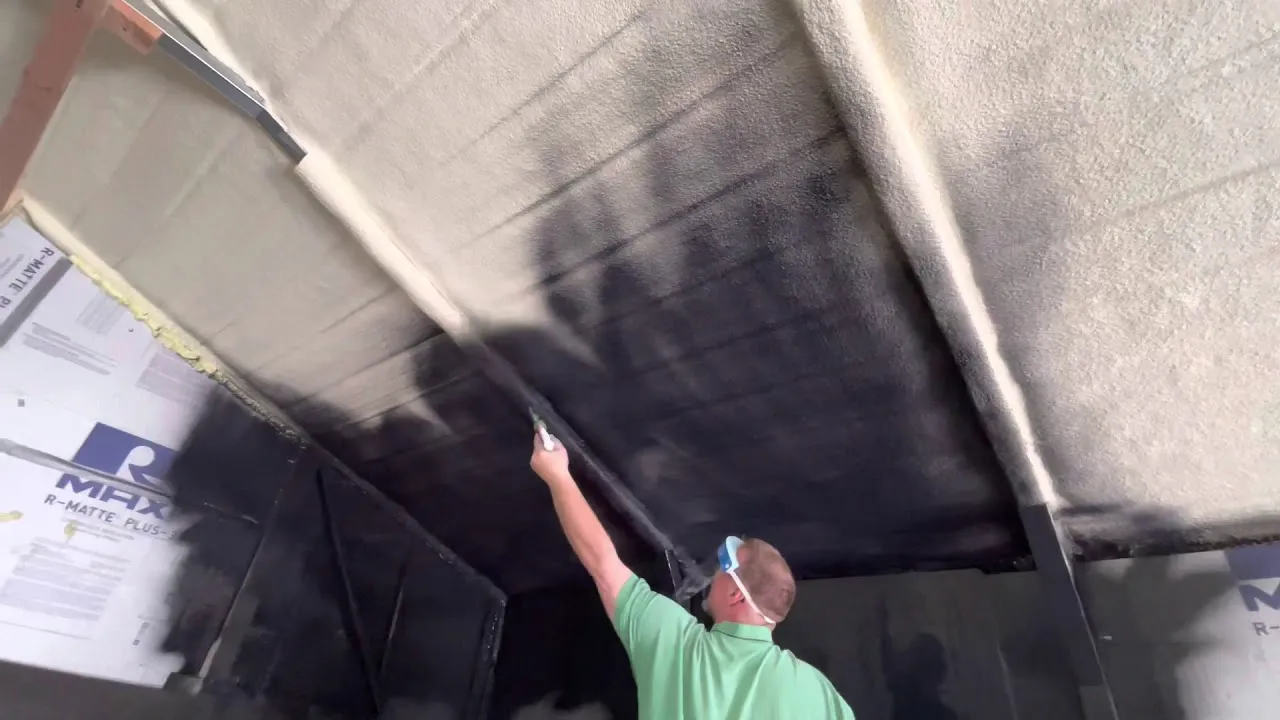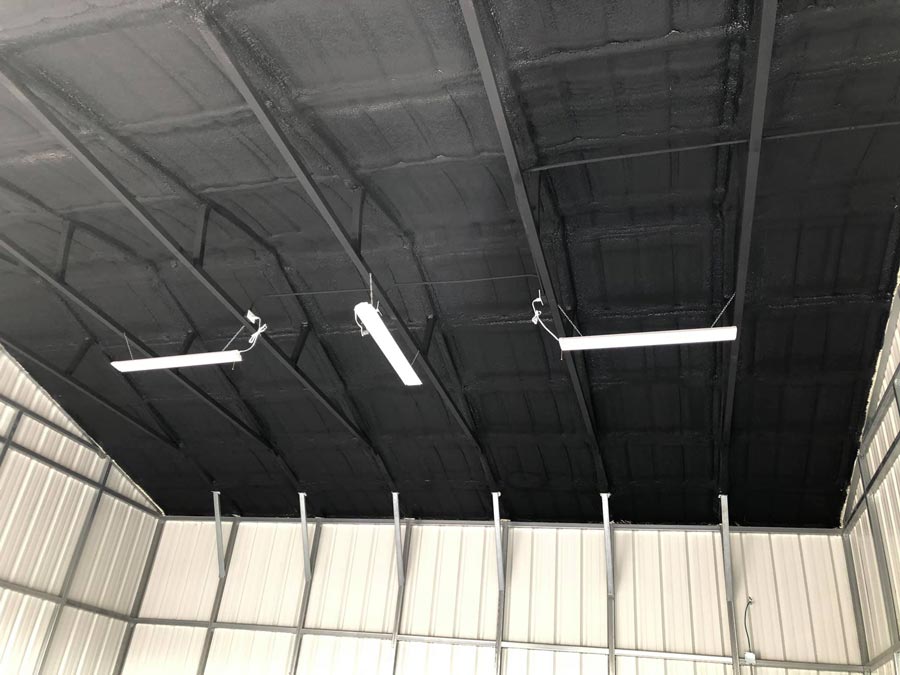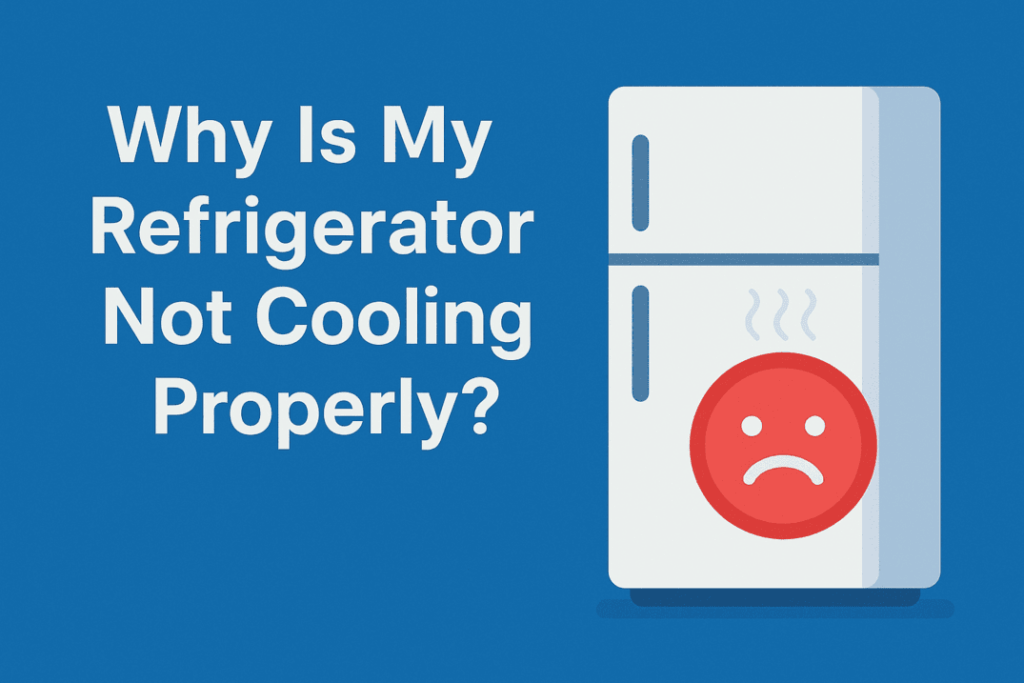Buildings insulated with spray foam offer energy efficiency and air sealing benefits but come with critical safety considerations. Among the most significant is fire protection, where building codes demand effective barriers between the foam and interior spaces. DC 315 Paint, a specially engineered intumescent coating, serves a vital role in meeting these fire safety requirements.
This article explains how DC 315 enhances fire resistance in foam-insulated structures, how it works, and why it meets both code and performance standards. We’ll cover practical aspects like application, performance comparisons, and compliance—delivering the insights necessary for contractors, architects, and inspectors who prioritize safe and code-compliant insulation solutions.
How DC 315 Works as a Thermal Barrier
DC 315 is not a typical paint. It is an intumescent coating that plays a crucial role in foam insulation systems.
Thermal Reaction and Expansion
When exposed to high heat, DC 315 expands and forms a char barrier that insulates the foam underneath.
- This process slows down heat transfer
- Prevents ignition of the foam substrate
- Provides valuable time for occupants to evacuate
Unlike ignition barriers that delay fire by seconds, thermal barriers like DC 315 provide extended fire resistance, helping delay flashover conditions.
Code Compliance and ASTM E119 Standards
DC 315 is tested under NFPA 286 and ASTM E119 protocols, which are recognized by International Building Code (IBC) as equivalent alternatives to traditional thermal barriers like ½” gypsum.
These tests measure:
- Flame spread
- Smoke development
- Structural performance under fire exposure
This testing helps professionals verify that using DC 315 meets both legal and safety obligations for foam-insulated buildings.

Application in Spray Foam Systems
Proper application ensures that DC 315 performs as intended. It is suitable for both open-cell and closed-cell spray polyurethane foam (SPF) systems.
Approved SPF Compatibility
DC 315 is approved for use over various spray foam brands. Fire testing must be done for each foam product to ensure compatibility.
Common SPF materials used with DC 315:
- Closed-cell SPF with high R-value
- Open-cell SPF for soundproofing or low-density walls
- Hybrid SPF applications in mixed assemblies
Always verify the foam type and thickness against manufacturer’s certified test data before proceeding with application.
Installation Guidelines and Best Practices
Correct film thickness is critical. Typical requirements:
- Wet mils: 22–28 mils
- Dry mils: 14–18 mils after curing
- Applied using airless sprayers for even coverage
Conditions affecting curing:
- Ambient temperature: above 50°F
- Humidity: under 85%
- Dry time: 24–48 hours based on conditions
Overspray, uneven coating, or misapplied thickness can compromise the fire rating. Inspect carefully post-application.
Performance Compared to Other Fire Barriers
Professionals often weigh the value of DC 315 against alternatives. The table below highlights performance comparisons.
| Feature | DC 315 Intumescent Coating | ½” Gypsum Board | Ignition Barriers (e.g., TB coatings) |
|---|---|---|---|
| Fire rating (NFPA 286) | Pass | Pass | Fail (not thermal barrier) |
| Approved over spray foam | Yes | Not directly applied | Yes, but limited scenarios |
| Application time & cost | Fast, labor-efficient | Labor-intensive | Low-cost but lower protection |
| Visual inspection post-install | Easy | Hidden in assemblies | Easy |
DC 315 provides a balance between safety, speed of application, and compatibility with foam systems. It’s not a replacement for all barriers but is often the most practical option where a thermal barrier is required but full drywalling is not feasible.

Building Code Considerations
DC 315 addresses specific sections of residential and commercial code related to foam insulation.
International Residential Code (IRC)
IRC requires that spray foam used inside buildings be separated from living spaces by a thermal barrier equivalent to ½” gypsum. DC 315 qualifies under code sections like:
- R316.4 – Thermal Barrier Requirements
- R316.5.3 – Attics and Crawl Spaces
For unoccupied areas, ignition barriers might suffice, but for occupied rooms or when access is frequent, DC 315 is needed.
International Building Code (IBC)
In commercial applications, IBC requires thermal protection for SPF used in:
- Hospitals
- Office buildings
- Educational facilities
DC 315 must pass a full-scale room corner test (NFPA 286) with the specific SPF product it is used with. Many spray foam manufacturers provide this documentation as part of their listing.
Fire Safety Benefits in Real-World Buildings
DC 315 isn’t just about code—it performs when needed.
Multifamily Housing and Apartment Units
Where interior wall and ceiling cavities are filled with foam, DC 315 allows fire resistance without structural changes. Property managers benefit from:
- Fewer inspections delays
- Reduced renovation downtime
- Meeting HUD and insurance requirements
Commercial & Industrial Settings
In commercial settings with exposed ceilings or warehouse walls, DC 315 reduces the need for extra framing or drywall installation. It’s often used in:
- Data centers
- Cold storage rooms
- Retrofit projects
Building owners appreciate the flexibility and code compliance without extra load on HVAC or architectural design.
Common Questions
Is DC 315 required for all spray foam projects?
No, but it is required wherever spray foam is installed in occupied spaces without a traditional thermal barrier like drywall. Attics or crawlspaces may allow ignition barriers under specific conditions.
How long does DC 315 last once applied?
DC 315 has a long lifespan when applied correctly and protected from moisture and abrasion. Most manufacturers report 10+ years of performance without degradation in protected environments.
Can DC 315 be painted over or tinted?
It can be top-coated with water-based latex paints if needed for aesthetics. However, it should never be mixed or tinted with other substances before application, as this could impact its fire-resistive properties.
Does DC 315 emit harmful fumes during application?
It is low-VOC and water-based, making it safer for indoor use. Proper ventilation and protective equipment should still be used during application.
Conclusion
DC 315 Paint plays a significant role in enhancing fire safety where spray foam insulation is used. It offers a tested, reliable solution that complies with NFPA 286, IRC, and IBC requirements, while delivering practical advantages during installation and inspection.
For professionals working with foam insulation—whether in homes, commercial buildings, or specialty facilities—DC 315 provides an efficient path to safety and code compliance. With the right application process and product selection, it helps ensure that fire protection measures are both effective and maintainable.
FAQs
What is the difference between a thermal barrier and an ignition barrier? A thermal barrier slows heat transfer for longer periods, typically passing tests like NFPA 286. An ignition barrier only delays ignition briefly and is used in limited access spaces like attics.
Can DC 315 be applied on-site after foam is installed? Yes, DC 315 is designed for on-site application over cured spray foam. It’s commonly applied using sprayers after foam installation.
Is DC 315 compatible with all spray foam brands? No. It must be tested and approved for use with each specific foam product. Always consult the manufacturer’s test data.
What happens if the coating is too thin or uneven? Insufficient thickness can lead to fire test failure or inspection rejection. Always verify dry mil thickness with a gauge post-application.
Can DC 315 be used in new construction and retrofits? Yes, it works well in both new builds and retrofit projects, especially where drywall isn’t practical or allowed.
Reviewer: Jack Parker, a spray foam professional with 7 years of experience, reviewed this post and helped improve sections dealing with brand clarity and customer communication.









